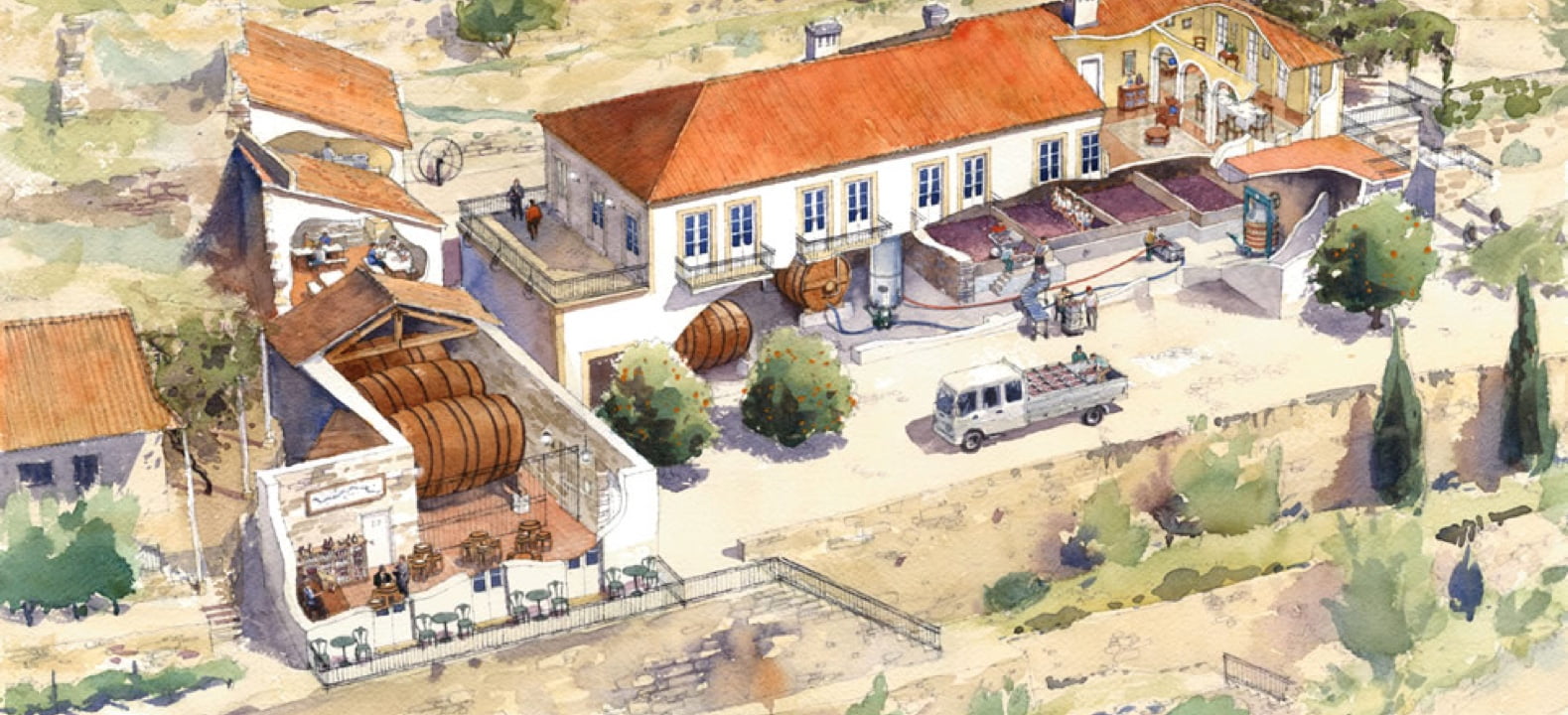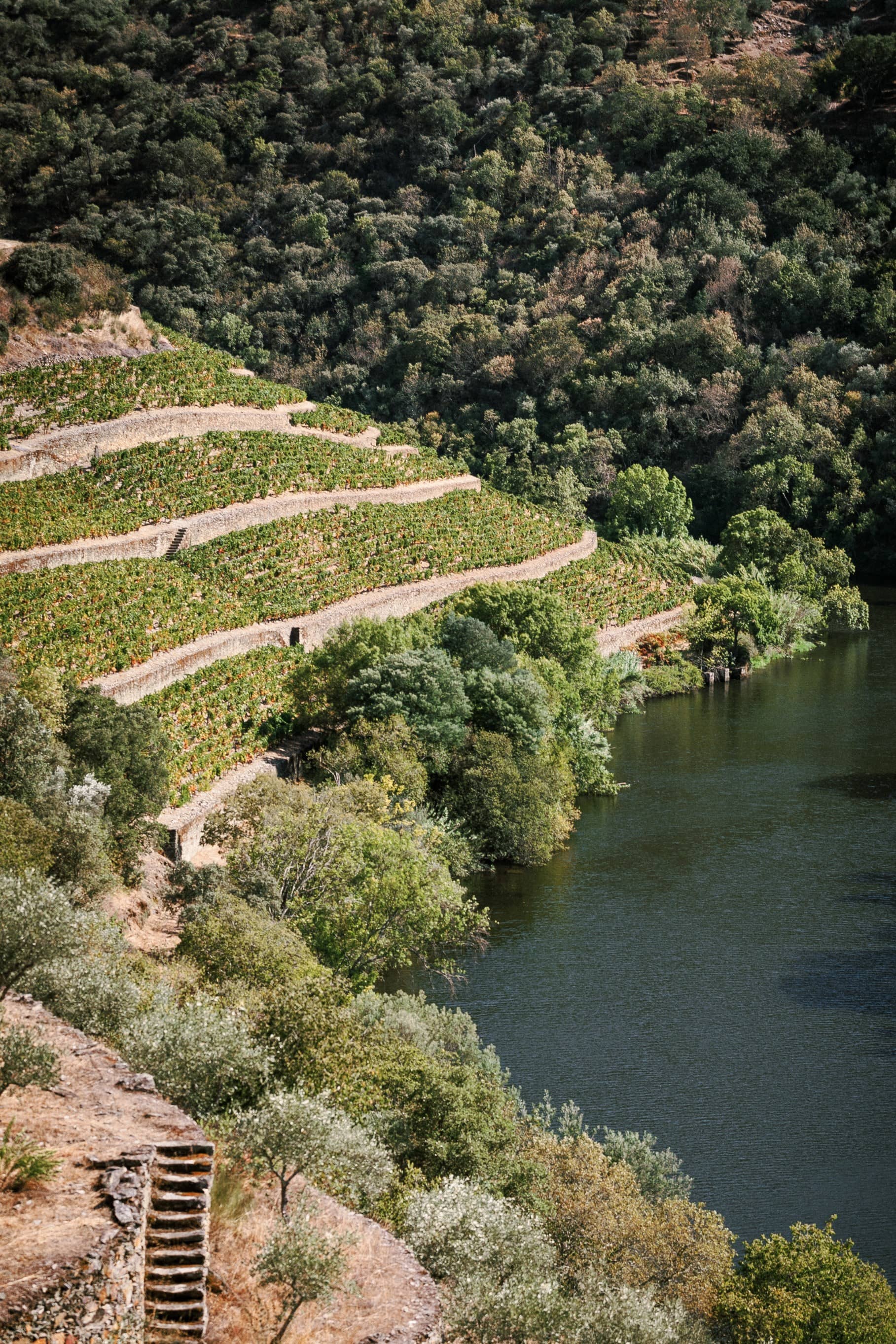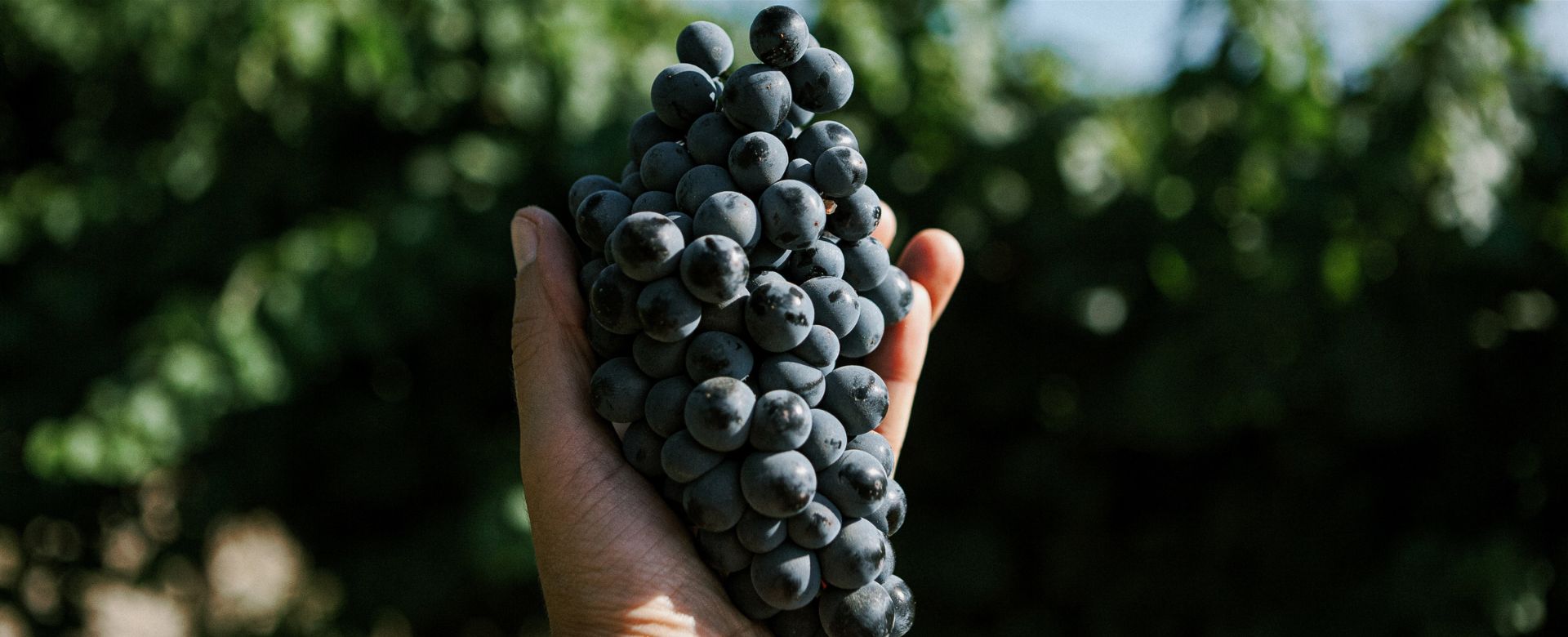The reconstruction work began soon after the property was purchased. With the exception of two hectares of old vines planted on traditional terraces on the banks of the Távora, known as Vinha do Rio, the steep, sloping lower slopes were reconverted to patamares, which are modern terraces separated by high slopes, using the experience gained during the reconstruction of Quinta do Cruzeiro.
The gentle slopes at the top of the estate were planted in vertical rows using the vine-to-top technique. One such plot, planted in 1985, was converted to organic viticulture in 1992. With an initial area of two hectares, it was later expanded to six hectares. These plots were one of the first experiments in organic viticulture in the Douro Valley, which provided much of the experience and knowledge that would further support the growth of the sustainable vineyard model developed by David Guimaraens and the viticulture director, António Magalhães.
The technique of planting in vertical rows was perfected in 1995 with the creation of the pioneering Vale da Régua vineyard. This vineyard follows a method perfected by Fonseca known as matrix planting. Each row is planted with a single grape variety best suited to the site. The rows located on the ridge are planted with Tinta Roriz, which requires dry soils in full sun. Touriga Francesa is planted in low locations, where the soil is more fertile and where its throws, more fragile than those of other varieties, are protected from the wind. On the hillside, the more elevated positions, more aerated and where the soil is often stonier and with better drainage, provide the best conditions for planting Touriga Nacional.






















